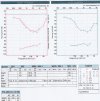New here, trying to find answers I can't find elsewhere. Resound products, Nexia 9 with disposable size 13 batteries. I have all the software and hardware to connect, already sucessfully saved my settings.
Do, generic question, basically for any brand or level. If you went into an office type environment, not too loud but hollow with hard surfaces, and the hearing aids responed by getting overly loud, which settings would you look to first?
I don't want to mess with the gain adjustments as I have had REM fitting and I'm pretty satisfied with how I hear. I think the answer will be in the environmental optimizer page or advanced features speech or comfort pages.
Do, generic question, basically for any brand or level. If you went into an office type environment, not too loud but hollow with hard surfaces, and the hearing aids responed by getting overly loud, which settings would you look to first?
I don't want to mess with the gain adjustments as I have had REM fitting and I'm pretty satisfied with how I hear. I think the answer will be in the environmental optimizer page or advanced features speech or comfort pages.


